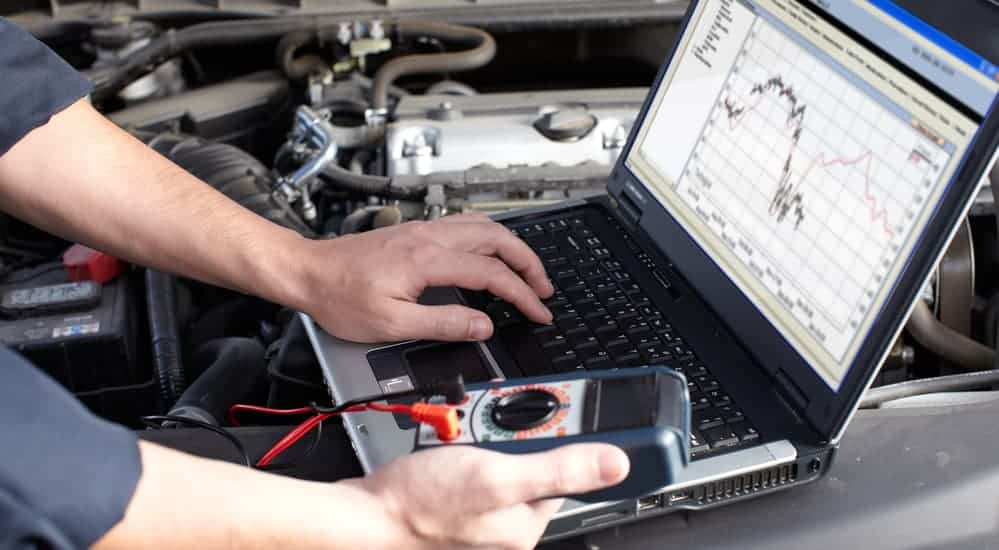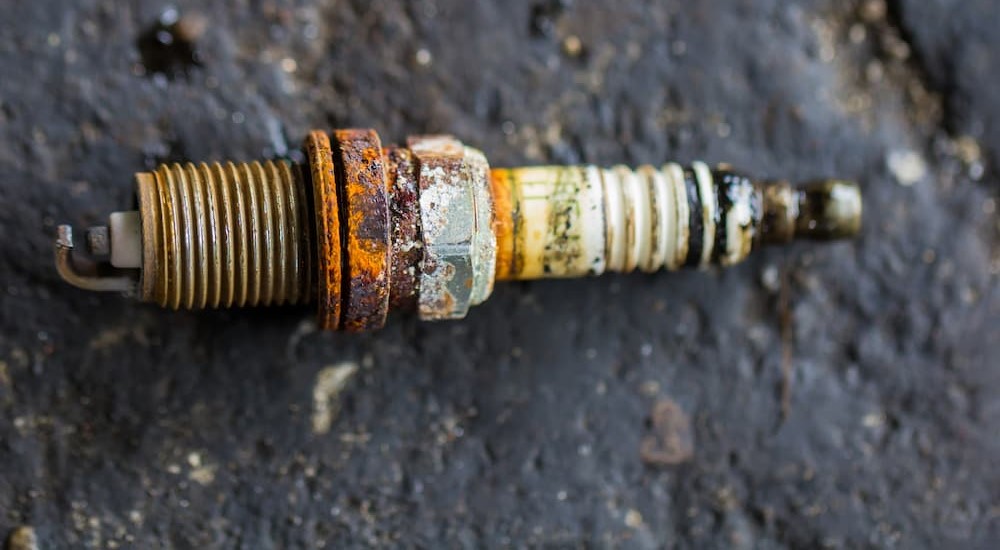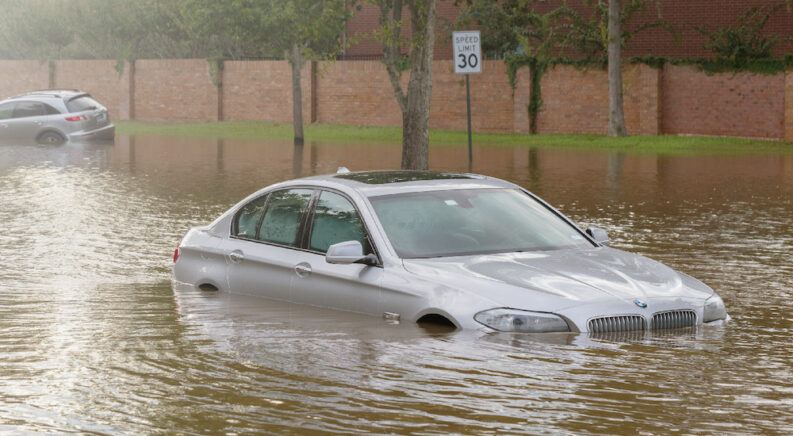As extreme weather events become more common, so does the prevalence of water and flood-damaged vehicles. According to a survey from Carfax, more than 400,000 flood-damaged vehicles were on the road in 2022. That’s a six percent increase from the previous year, and the trend won’t slow down anytime soon. 100-year floods are so extreme that they are only expected to happen once a century and are now almost five times as common, which is bad news for any driver whose car does not double as a boat.
Water damage can wreak havoc on every corner of a vehicle, causing mold to bloom throughout the upholstery, promoting rust and short-circuiting electronics. Water can even find its way into the engine, causing compression issues that can easily lead to a bent or broken piston rod, but a flooded or water-damaged vehicle is not always a total loss. Depending on the extent of the damage, a flooded vehicle can be resurrected and given a second life if it is given enough time, patience, and elbow grease. If you are wondering how to deal with flood damage, we have got you covered. Read on to learn how to handle a flooded vehicle, when to contact your insurance, and a few other tips that help make this nightmare scenario easier to endure.
How-To
Do not start the car! Before we get into the step-by-step process of dealing with a flooded car, here’s a warning: It does not matter if your car is safely tucked away in your driveway or if it has been swept down the street and is sitting in the middle of your neighbor’s patio: you should never try to start a flooded car before you have confirmed that there is not any water in the engine itself. As we mentioned in the introduction, a flooded engine can cause significant compression issues, leading to the dreaded hydrolock that can render a damp engine unusable in seconds. When the water level rises above the engine compartment, it can trickle into the intake system and down to any cylinders with open intake or exhaust valves. Even if the water does not reach above the engine compartment, it is a good idea to keep your keys well clear of the ignition until you are absolutely sure. Knowing whether the engine will turn over after a flood might be tempting, but any impatience can easily lead to a big-ticket repair.
Disconnect The Battery
Electricity and water do not get along very well, so before you dive into the rest of the project, take a moment to disconnect your car battery, starting with the negative terminal. When the car is turned on for the first time after a flood, there is a significant risk of short-circuiting electrical components that will only add to your repair headaches, but by disconnecting the battery, you can limit ongoing damage as much as possible. After removing the battery, turn on the headlights (with the car still off) to drain any remaining power. You can always disconnect your battery to limit potential electrical issues before a major storm or flood hits your area.
Assess The Damage
The next step in dealing with a flooded or water-damaged vehicle is to assess the extent of the damage. The most important part of this process is determining just how high the water reached, as it will indicate what parts and components warrant further inspection. In the case of a flood, finding the high-water mark is easy as there tends to be a distinct line of discoloration that shows where the water stopped. If the high-water line is below the bottom of your doors, you are probably in pretty good shape, but if it reaches any further, you will have some soggy floorboards to deal with. When water reaches the dashboard, many electrical systems come into play, but the worst-case scenario is a high-water line stretching to the top of the dashboard. At this point, the engine has likely been entirely submerged, making the whole process much more complicated. If the high-water line is subtle, use a piece of tape to mark it for future reference.
Consult Your Insurance
There is still plenty of assessment and cleaning to be done, but after you have taken care of these first steps, checking in with your insurance company is always a good idea. Suppose you have a comprehensive policy that includes flood insurance. In that case, your insurer might be able to take the wheel from this point on, dispatching a tow truck to retrieve your vehicle and bringing it to a qualified mechanic who can determine if it’s salvageable or a total loss. For those who live in flood-prone areas, a good policy that includes flood insurance can make your life much easier while adding just $400 to $500 to your annual bill.
If your policy does not include comprehensive coverage or specific flood insurance and you are relatively handy, feel free to proceed to the next steps on your own, but if you have been paying that premium all these years, you might as well get your money’s worth. The only exception would be a scenario where the water reached well above the engine. In these cases, no amount of D.I.Y.-ing will be worth your while, as the vehicle will probably be written off as a total loss by your insurance. Put away your towels and wet/dry vacuum, and spend your time navigating your insurance company’s claims process instead.

Dry, Dry, Dry
If you are going to tackle the damage on your own, you should make drying out the vehicle your next priority. Start by rolling down any manually operated windows, or open all the doors if your windows are electrically powered. This will maximize airflow, which can be crucial in preventing mold, mildew, and any nasty odors from taking hold. Start by using towels or a wet/dry vacuum to collect any moisture that is pooled on the floor or any low recesses, and then use towels to pat down the upholstery, sopping up as much moisture as you can. If your seats are waterlogged, remove them entirely and let them dry outside the vehicle. At the very least, use fans or dehumidifiers to speed the process along. Carpets, mats, and even door panels are prone to soaking up bad smells and retaining water, so consider removing and possibly replacing these components. If you can sufficiently dry these parts out, treat them with a bit of baking soda before reinserting them to reduce potential odors.
Drain the Oil
No matter how high or low the waters reached, it’s never a bad idea to check in on your oil before proceeding. Start by checking the oil dipstick, keeping an eye out for any water droplets that would indicate that water has found its way into the engine. Any water should be a big red flag that reiterates our first warning: don’t attempt to drive or even start the vehicle as any trips it takes in the near future are going to have to occur on the back of a tow truck. The transmission oil and differential fluid are also probably going to need to be drained and refilled while you’re at it.
Check Fuel System, Cylinders, Spark Plugs, and Fluids
If you are tackling the flood damage on your own, the next step would be to quickly check the fuel system, cylinders, spark plugs, and various fluids around the vehicle. Removing spark plugs and hand-cranking the vehicle will tell you if water made it into the cylinders, but you might also want to get a peek into the cylinders themselves to see if there has been any corrosion, especially if the vehicle has been sitting for a while. Next, siphon some gas from the tank and check for the presence of water, making sure to plumb the lowest depths of the tank where the heavier water collects beneath the gas. If you do detect water, the entire tank is going to need to be emptied. Lastly, check the fluid for the brake, clutch, power steering, and coolant reservoirs. Ideally, these will all be sealed to prevent moisture from seeping in, but there are no guarantees.

Check Electrical Systems
Once you have checked everything else, it is time to tackle the electrical systems. Today’s vehicles are packed with around 5,000 ft of electrical wiring on average, providing many places for something to go wrong. Reconnect the battery and check any systems that can be used without the engine being turned on, including headlights, power locks, windows, seats, turn signal, air conditioning, interior lights, and the stereo. Keep track of which systems seem to be working, and be mindful of any noticeable dips in performance, as they could be a sign of water-related trouble.
From the outside, a flooded or water-damaged car might not appear in bad shape, but it is a whole different story once you start exploring the interior and look under the hood. From vital components like the engine to expensive electrical systems and the upholstery, our vehicles are designed to stay dry, which is why water damage can be such an insidious problem. In the vast majority of cases, a driver will be better off handling the water and mold abatement process through their insurance. However, if you want to save money or have a bare-bones policy, there is still a lot the average D.I.Y.-er can do. We will leave you with two reminders while you are waiting for your vehicle to air out: never start the engine in a car that’s suffered water damage until it’s been examined by a professional, and always request a vehicle history report or VIN check before buying a used vehicle. After major floods and other extreme weather events, the market tends to become inundated with water-damaged cars that have been passed off as run-of-the-mill used models as part of a “title washing” scam. When you know what signs to look for, avoiding these lemons can be relatively easy, but if a deal seems too good to be true, be suspicious.

